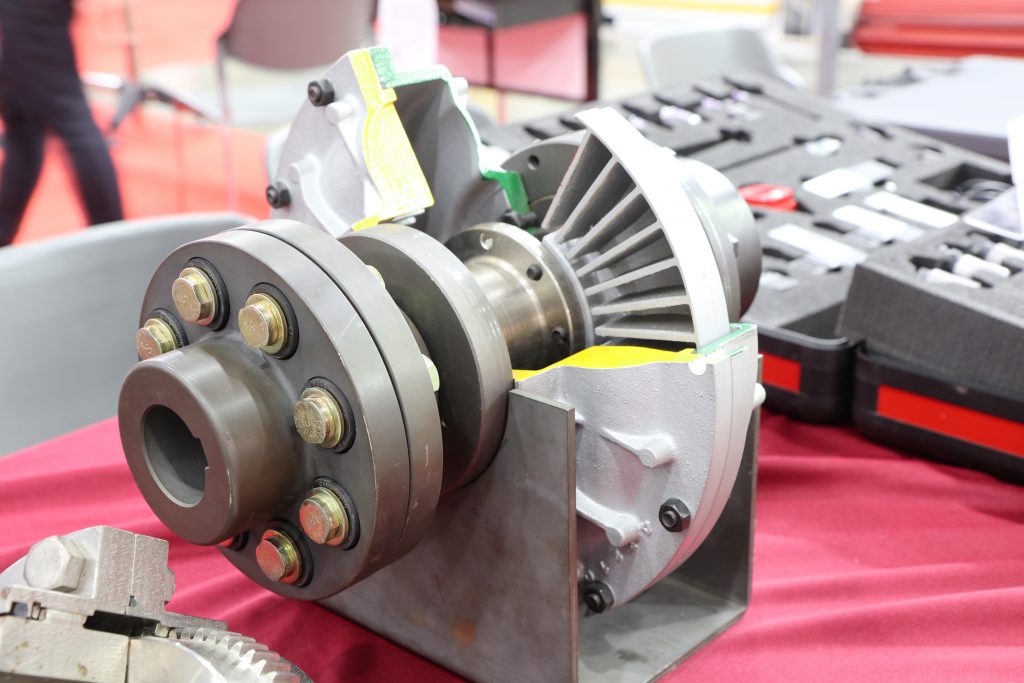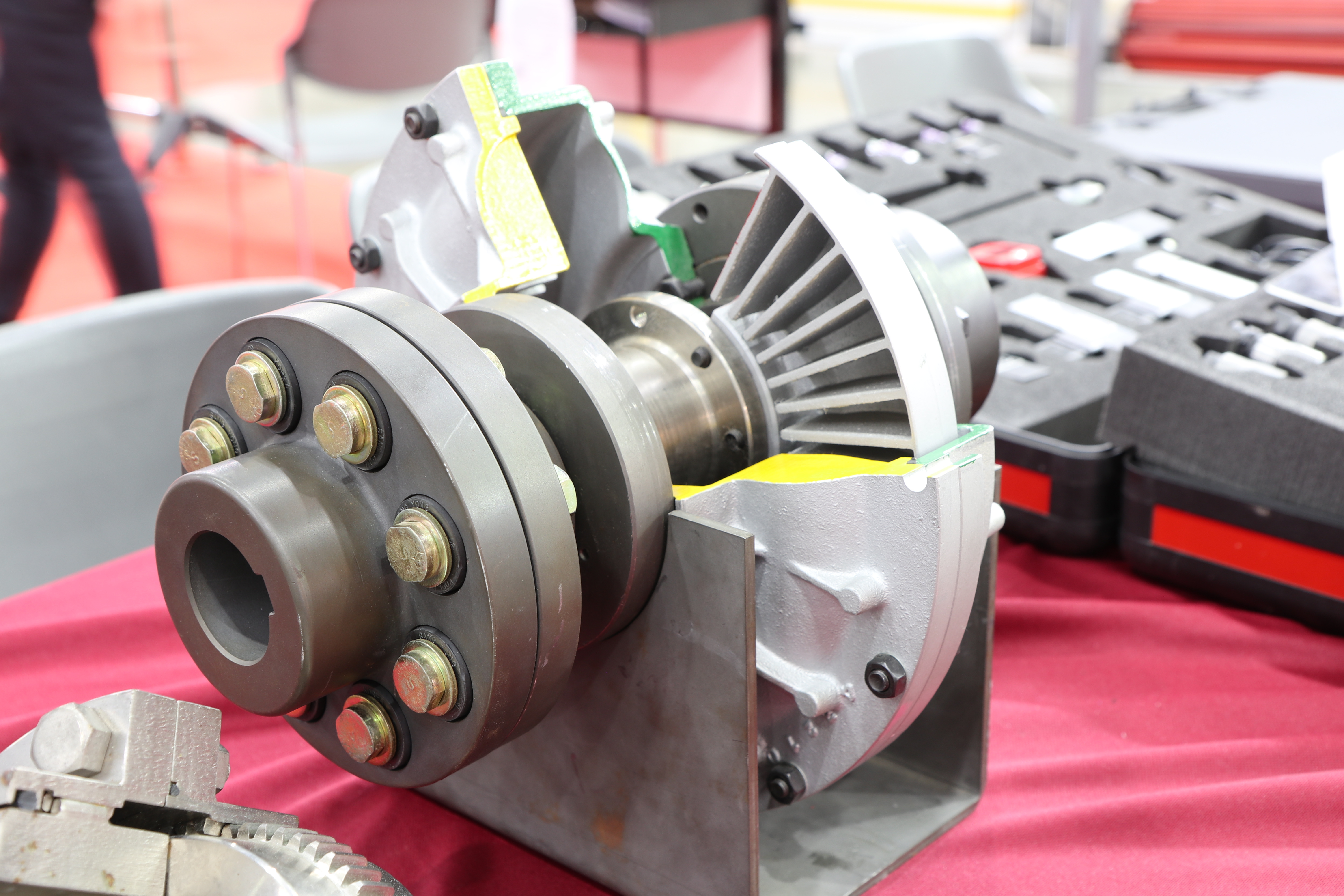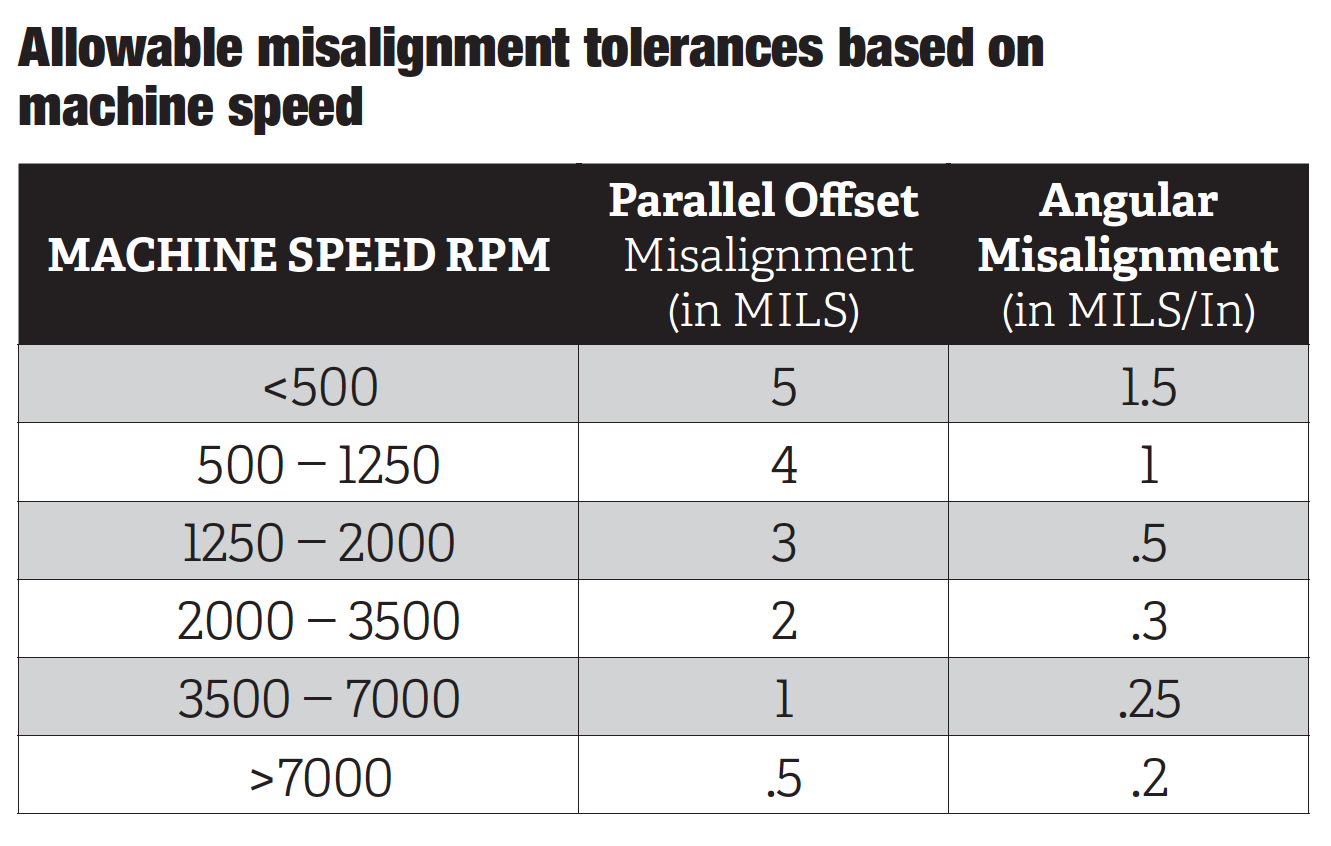
MRO Quiz: Troubleshooting power transmission coupling problems
Power transmission couplings connect two shafts that turn in the same direction on one centerline. Three principle types exist; rigid, flexible and special purpose.
July 9, 2021 | By L. (Tex) Leugner
 Photo: © warut / Adobe Stock.
Photo: © warut / Adobe Stock. 
Photo: © warut / Adobe Stock.
Rigid couplings are used in applications where misalignment is not a factor, flexibility is not required, and where the coupling is not required to absorb load shocks or torque changes. Rigid couplings connect shafts using bolted flanges, keyed sleeves or ribbed clamps bolted together over the shaft ends with keyways. They are used primarily for vertical drive systems. Lubrication is not required, but larger couplings, or those running at high speeds, may require balancing to reduce vibration.
Flexible couplings also connect two rotating shafts, but are designed to dampen vibration, absorb some shock loading, and provide some axial movement or end float of the shafts, as well as compensate for minor misalignment. The three categories of flexible couplings include: mechanically flexible, material flexible and metallic grid couplings, that provide a combination of mechanical and material flexibility.
Special purpose couplings include mechanically flexible U-joints, constant velocity joints, magnetic couplings, eddy current, fluid couplings and the Schmidt or offset coupling designed to handle large parallel shaft offsets of up to 18 inches and 1,000,000 in-lbs of torque.
Does the maintenance group recognize where mechanically flexible couplings should be applied?
Logic: Gear and chain couplings provide a flexible connection by permitting coupling components to move or slide over each other. Some minor misalignment is provided by the clearances between gear teeth and chain, and sprocket teeth respectively, however, shafts should be aligned to less than 0.002 inches to ensure long coupling life. Approximately 75 per cent of gear and chain coupling failures are caused by misalignment or improper or insufficient lubrication. Some newer types of gear and chain couplings contain nylon gear sleeves or nylon chains and these types do not require lubrication.
Are the applications of the material flexible coupling types recognized?
Logic: These couplings incorporate elements that accommodate a certain amount of bending or flexing. The flexing materials that provide the connection between the coupling drive and driven components include laminated discs, bellows, diaphragms or elastomeric materials that may include rubber or plastics, such as neoprene and urethane. Generally speaking, these coupling types require little maintenance other than alignment, and their service life is limited by the fatigue limit of the flexing material itself.
Are the applications of combination mechanical/material flexible couplings recognized?
Logic: These include the popular grid coupling; a compact unit capable of transmitting high torque at speeds up to 6,000 rpm. The construction of the coupling consists of two flanged hubs, each with grooved slots cut axially on the outer edges of flanges that are connected by using a serpentine spring grid that contacts the grooved slots. The flexibility of this grid provides torsional resilience that offers some misalignment and end float, dampens vibration, and may reduce peak or shock loads by up to 25 per cent. Grid type couplings require lubrication using good quality coupling grease in the areas of the grooved slots and serpentine spring.
Does the maintenance group understand why couplings fail?
Logic: Couplings fail for several reasons, but the primary causes are improper selection for the particular application, excessive misalignment, improper, inadequate, or insufficient lubrication, harsh environmental or operating conditions, and excessive speeds or loads. A common application is variable high torque machine trains operating at moderate speeds that require a serpentine spring and grid coupling. Vertical pump shafts would use flanged or split rigid couplings, while transmission of high torque at all speeds would require a chain or gear coupling.
Does the maintenance group understand the coupling alignment factor?
Logic: There is a perception that flexible couplings can accommodate a great deal of parallel offset and/or angular shaft misalignment. This is untrue. Depending upon the coupling type, flexible couplings can only accommodate from ¼ to about 2 ½ degrees of misalignment and high speed, high load drive applications must be aligned to close tolerances. Symptoms of misalignment include, but are not limited to, coupling noise, powdered rubber particles, or leaking lubricant directly below the coupling (depending on coupling type), premature or frequent bearing or seal failure at one or both machines, “soft foot” condition at foot bolts, shimmering of oil on base plates or near the foot bolts, high operating temperatures and/or vibration at or near the coupling.

Table: L. (Tex) Leugner
Does the maintenance group understand coupling lubrication application?
Logic: The coupling types that require lubrication are gear, chain, combination mechanical, and material flexible grid couplings. Lubricants used for gear and grid couplings include ISO 460 compounded oils for low speeds and centrifugal G forces up to 8000 applications, ISO 100 rust and oxidation inhibited anti-wear oils for high speeds with centrifugal G forces of over 8,000, and low temperatures of -20°C (-4°F) applications. NLGI Grades 1 and 2 coupling greases may be used for gear, chain and grid type couplings.
Centrifugal Force “G” may be calculated from the equation:
G = 14.2 X 10 – 6 dN2
Where d = pitch diameter of the coupling in inches
And N = revolutions per minute.
Oil or grease can be used at coupling speeds of 3600 to 6000 rpm. Where coupling speeds that exceed 6000 rpm, oil is recommended. These units contain access plugs for re-lubrication that must be properly torqued after re-lubrication to ensure safety. Re-lubrication and inspection intervals should be carried out at least annually or more frequently for high temperature applications. The amount of lubricant is important. Gear couplings may lock up and lose flexibility if they are overfilled. (Any increase in vibration of the coupling after re-lubrication suggests overfilling).
If a coupling requires disassembly for re-lubrication, ensure that the two flange halves are marked for correct reassembly use specified coupling flange bolts properly torqued, and install new seals or gaskets if the old seals and gaskets have any damage. Before reassembly of grid type couplings, inspect the serpentine spring for damage, wear or fatigue cracks, and inspect the grid grooves for excessive wear or evidence of fatigue. On chain and gear type couplings, inspect the chain, sprocket and gear teeth for looseness wear and evidence of fatigue.
Does the maintenance group understand the operational factors?
Logic: Operating conditions play a large role in the long life and reliability of flexible couplings. Operating temperatures will affect not only the lubricant, but can seriously shorten the life of the materials used in elastomeric couplings. Generally, seals and coupling components cannot withstand temperatures much above 104°C (220°F) and group I mineral base oil begins to oxidize at 71°C (160°F). These guidelines should be understood and applied by machinery operators, and as a result, when high operating temperatures and/or where zero “backlash” is required, flexible disc couplings are recommended over elastomeric types.
In addition, solvents, caustic process fluids and water washing practices may be harmful to some elastomeric couplings and disc, grid or gear couplings may be required. Wherever high loads and speeds are required, disc and gear couplings may be the best choice. Finally, if high temperatures are being experienced, remember that an angular misalignment of as little as 0.001 inches can increase adjacent bearing temperatures by as much as 18°C (65°F). Coupling operating conditions and environment, lubrication and alignment are all related. MRO
______________
L. (Tex) Leugner, the author of Practical Handbook of Machinery Lubrication, is a 15-year veteran of the Royal Canadian Electrical Mechanical Engineers, where he served as a technical specialist. He was the founder and operations manager of Maintenance Technology International Inc. for 30 years. Tex holds an STLE lubricant specialist certification and is a millwright and heavy-duty mechanic. He can be reached at texleug@shaw.ca.
